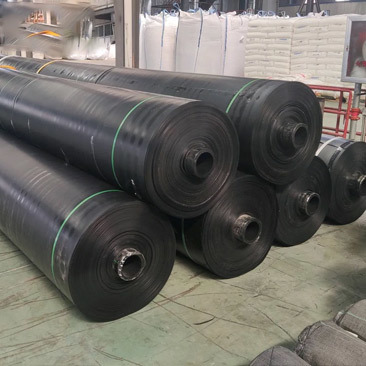Understanding Composite Geomembranes: A Key Element in Modern Construction
Release time:
2025-10-03
Composite geomembranes are advanced materials widely used in the construction and civil engineering sectors, particularly in applications where waterproofing and containment are essential. These materials consist of a polymeric membrane that is often reinforced with geotextiles or other substrates, providing a unique blend of durability, flexibility, and environmental protection. One of the primar
Composite geomembranes are advanced materials widely used in the construction and civil engineering sectors, particularly in applications where waterproofing and containment are essential. These materials consist of a polymeric membrane that is often reinforced with geotextiles or other substrates, providing a unique blend of durability, flexibility, and environmental protection.
One of the primary advantages of composite geomembranes is their superior impermeability. This characteristic makes them ideal for use in landfills, mining applications, and containment ponds, where preventing leakage is crucial to protect surrounding ecosystems. The robust nature of these materials helps to withstand various environmental conditions, ensuring longevity and reliability.
Additionally, composite geomembranes offer significant advantages in terms of installation and maintenance. Their lightweight nature makes transportation and handling easier on construction sites, leading to reduced labor costs and project timelines. Moreover, the flexible design allows for quick adaptation to various site conditions, further enhancing their suitability for diverse applications.
In construction projects, composite geomembranes can also play a vital role in drainage and erosion control. When used in conjunction with other geosynthetic materials, they facilitate effective water management, helping to prevent soil erosion and stabilize slopes. This functionality is particularly important in areas prone to heavy rainfall or flooding, where soil stability is a critical concern.
Environmental considerations are increasingly becoming a priority in construction practices, and composite geomembranes contribute to sustainable development goals. Their ability to isolate contaminants and prevent leachate migration not only protects natural resources but also complies with stringent environmental regulations. This makes them a preferred choice for many environmentally conscious projects.
Moreover, composite geomembranes are available in various thicknesses and configurations, allowing for tailored solutions that meet specific project requirements. This versatility ensures that engineers and construction professionals can find the right material for their unique challenges, enhancing project outcomes while minimizing environmental impact.
In summary, composite geomembranes are an integral part of modern construction practices, offering exceptional waterproofing, durability, and environmental protection. Their versatility and ease of installation make them suitable for a wide range of applications, from landfill liners to drainage systems. As the construction industry continues to evolve, the role of these innovative materials will only become more significant, driving efficiency and sustainability in various projects.
One of the primary advantages of composite geomembranes is their superior impermeability. This characteristic makes them ideal for use in landfills, mining applications, and containment ponds, where preventing leakage is crucial to protect surrounding ecosystems. The robust nature of these materials helps to withstand various environmental conditions, ensuring longevity and reliability.
Additionally, composite geomembranes offer significant advantages in terms of installation and maintenance. Their lightweight nature makes transportation and handling easier on construction sites, leading to reduced labor costs and project timelines. Moreover, the flexible design allows for quick adaptation to various site conditions, further enhancing their suitability for diverse applications.
In construction projects, composite geomembranes can also play a vital role in drainage and erosion control. When used in conjunction with other geosynthetic materials, they facilitate effective water management, helping to prevent soil erosion and stabilize slopes. This functionality is particularly important in areas prone to heavy rainfall or flooding, where soil stability is a critical concern.
Environmental considerations are increasingly becoming a priority in construction practices, and composite geomembranes contribute to sustainable development goals. Their ability to isolate contaminants and prevent leachate migration not only protects natural resources but also complies with stringent environmental regulations. This makes them a preferred choice for many environmentally conscious projects.
Moreover, composite geomembranes are available in various thicknesses and configurations, allowing for tailored solutions that meet specific project requirements. This versatility ensures that engineers and construction professionals can find the right material for their unique challenges, enhancing project outcomes while minimizing environmental impact.
In summary, composite geomembranes are an integral part of modern construction practices, offering exceptional waterproofing, durability, and environmental protection. Their versatility and ease of installation make them suitable for a wide range of applications, from landfill liners to drainage systems. As the construction industry continues to evolve, the role of these innovative materials will only become more significant, driving efficiency and sustainability in various projects.






